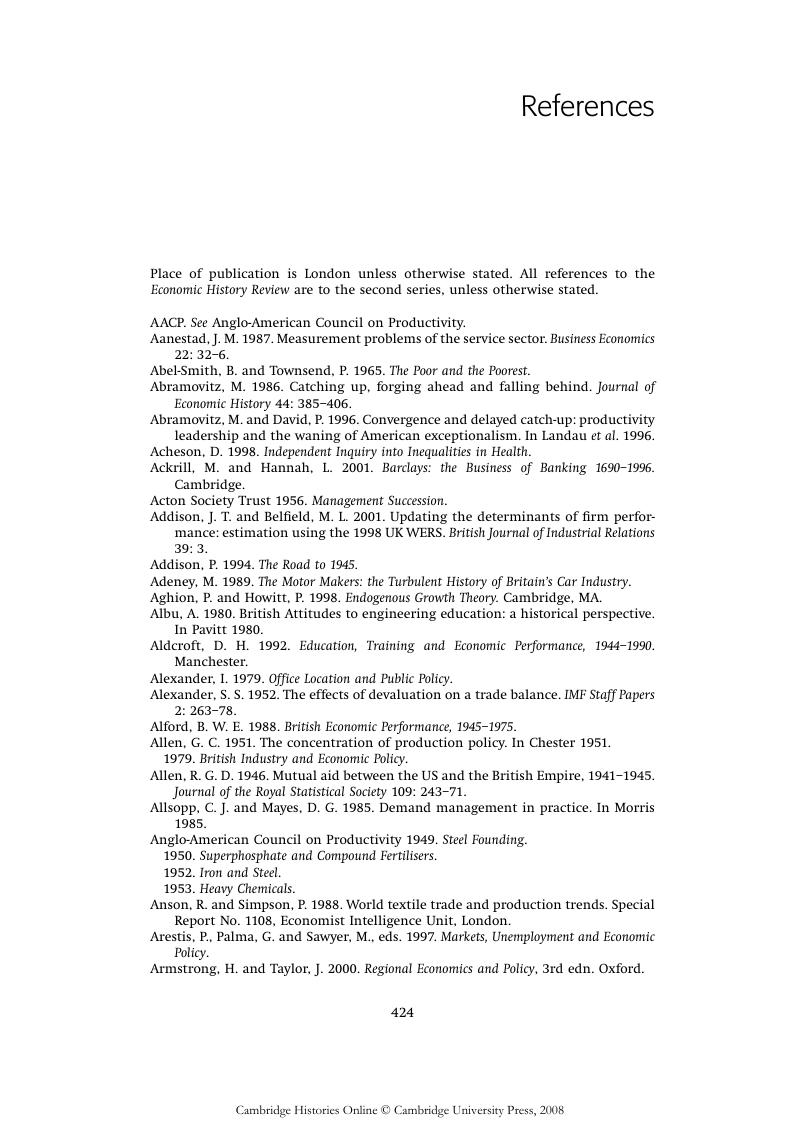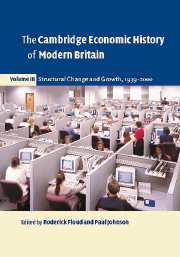Book contents
- Frontmatter
- Chapter 1 The war-time economy, 1939–1945
- Chapter 2 Failure followed by success or success followed by failure? A re-examination of British economic growth since 1949
- Chapter 3 The performance of manufacturing
- Chapter 4 A failed experiment: the state ownership of industry
- Chapter 5 Employment, education and human capital
- Chapter 6 Money and monetary policy since 1945
- Chapter 7 The financial services sector since 1945
- Chapter 8 Economic policy
- Chapter 9 The welfare state, income and living standards
- Chapter 10 The rise of the service economy
- Chapter 11 Impact of Europe
- Chapter 12 Technology in post-war Britain
- Chapter 13 Regional development and policy
- Chapter 14 British fiscal policy since 1939
- Chapter 15 Industrial relations and the economy
- References
- Index
- References
References
Published online by Cambridge University Press: 28 March 2008
- Frontmatter
- Chapter 1 The war-time economy, 1939–1945
- Chapter 2 Failure followed by success or success followed by failure? A re-examination of British economic growth since 1949
- Chapter 3 The performance of manufacturing
- Chapter 4 A failed experiment: the state ownership of industry
- Chapter 5 Employment, education and human capital
- Chapter 6 Money and monetary policy since 1945
- Chapter 7 The financial services sector since 1945
- Chapter 8 Economic policy
- Chapter 9 The welfare state, income and living standards
- Chapter 10 The rise of the service economy
- Chapter 11 Impact of Europe
- Chapter 12 Technology in post-war Britain
- Chapter 13 Regional development and policy
- Chapter 14 British fiscal policy since 1939
- Chapter 15 Industrial relations and the economy
- References
- Index
- References
Summary

- Type
- Chapter
- Information
- The Cambridge Economic History of Modern Britain , pp. 424 - 451Publisher: Cambridge University PressPrint publication year: 2004

